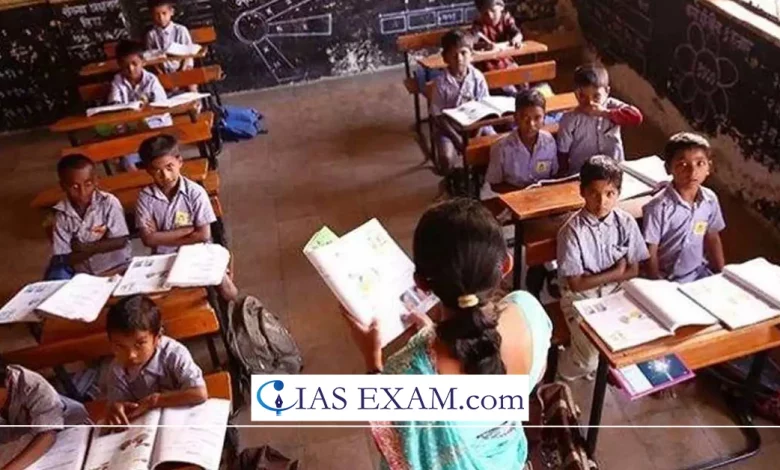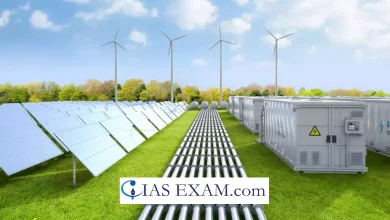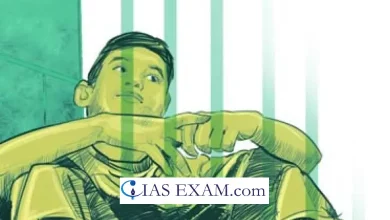Daily Current Affairs for UPSC
Hierarchy and Gaps in education in India
Syllabus- Governance [GS Paper-2]

Context
It has been observed that there is a persistent hierarchy and gaps in education in India.
Gaps in India’s Education System
- The Learning Gap: The Annual Status of Education Report (ASER) 2023 found that more than half of rural students aged 14 to 18 years struggled with basic arithmetic, a skill they have to have mastered in Classes 3 and 4.
- About 25% of this age institution can not read a Class 2 level text in their vernacular.
- As they grew older, the rate of dropouts increased.
- Enrollment Rates: Overall, 86.8% of 14-18-year-olds are enrolled in an educational institution.
- However, there are notable differences visible by age, with 3.9% of 14-year-olds and 32.6% of 18-year-olds not enrolled.
- Vocational education: Only 5.6% are taking vocational education or related courses.
- It is more frequent amongst college-level students (16.2%).
- Most children are taking short duration courses of six months or much less.
- Basic Abilities: About 25% of the youth can not study a Class II level textual content fluently in their local language.
- Over half struggle with division problems (3-digit by 1-digit), with only 43.3% of 14-18-year olds able to solve such problems efficiently.
- Digital Awareness and Skills: Close to 90% of all teens have a phone inside the household, and 43.7% of males have their own phone in comparison to 19.8% of females.
- Males commonly outperform females in digital tasks, and performance on digital tasks improves with education level and basic reading proficiency.
- Socio-Economic Disparities: The hierarchy between social groups persists; Scheduled Tribes are nonetheless the most disadvantaged.
- The education arrangements in India are not founded on the resident-driven standard. Rather, these seem to have been forced on them.
Bridging the Gaps
- Role of Technology: Technology has emerged as an effective tool to bridge the education gap, particularly in tier 2 and tier 3 cities.
- EdTech structures are catering to the gaps inside the Education gadget, presenting online consultancy to make certain that students from non-metropolitan cities make informed career selections.
- AI tools are supporting bridge mastering gaps that widened in schools during the COVID-19 pandemic.
- Devolution of Central and State Grants to Local Bodies: The Central and State grants should be disaggregated gram panchayat-wise and urban local body-wise.
- It aims to ensure direct transfer of untied funds to schools.
- Community Management of Schools and Equal Resource Sharing: Schools have to be community-managed, and the State government should primarily act as the financing agent.
- The Central and State governments ought to equally share the additional resources needed to rejuvenate the system, given that education is a Concurrent subject from 1976 onwards.
Budget (2024-25) for Education
- Department of School Education & Literacy: It has been allotted ₹73,498 crore for FY 2024-25.
- This is the highest ever allocation for the branch.
- There has been an overall increase of ₹12,024 crore (19.56%) in the FY 2024-25 from the Revised Estimates (RE) of 2023-24.
- Department of Higher Education: It has been allocated ₹47,619.77 crore for FY 2024-25.
- The scheme allocation is ₹7,487.87 crore and the non-scheme allocation is ₹40,131.90 crore.
- There has been an overall increase of ₹3,525.15 crore (7.99%) in the FY 2024-25 with respect to FY 2023-24.
Other Major Government Initiatives
- Ek Bharat Shreshtha Bharat: It aims to enhance the expertise and bonding among states, thereby strengthening the harmony and integrity of India.
- PM e-VIDYA: It was launched as part of Atma Nirbhar Bharat Abhiyan, which unifies all efforts related to virtual/on line/on-air schooling to permit multi-mode access to education.
- MANODARPAN: An initiative covering a huge range of activities to offer psychosocial aid to students, instructors, and families for Mental Health and Emotional Wellbeing for the duration of the COVID outbreak and beyond.
- Centrally Sponsored Scheme on Teacher Education: It aims to create a sound institutional infrastructure for pre-service and in-provider schooling of basic & secondary college teachers and for provision of instructional useful resource guide to essential and secondary schools.
- Scheme for Infrastructure Development of Private Aided/Unaided Minority Institutes (IDMI): It presents financial assistance to minority institutions to augment their infrastructure.
- Strengthening for providing quality Education in Madrassas (SPQEM): It pursuits to encourage traditional institutions like Madrassas and Maktabs by giving monetary help to introduce technological know-how, arithmetic, social research, Hindi and English in their curriculum.
- Adult Education – Saakshar Bharat: It aims to further promote and strengthen adult education, especially of women, by extending educational options to those adults who have lost the opportunity of access to formal education and crossed the standard age for receiving such education.
- Central Sector Interest Subsidy Scheme, 2009 on Model Education Loan Scheme of IBA: It offers full interest subsidy in the course of the period of moratorium on loans taken by using students from economically weaker sections for pursuing any of the permitted publications of research in technical and expert streams from recognized institutions in India.
Conclusion
- Bridging the gaps in India’s education system is essential for the country’s socio-economic development. While full-size strides had been made, there’s still a long way to go.
- It calls for concerted efforts from the government, academic institutions, and society at large to ensure that every child in India has access to quality education.
Source: The Hindu
UPSC Mains Practice Question
Q.Discuss the challenges related to higher education in India. Also suggest the corrective measures that need to be taken in this regard. (250 words)





.png)



